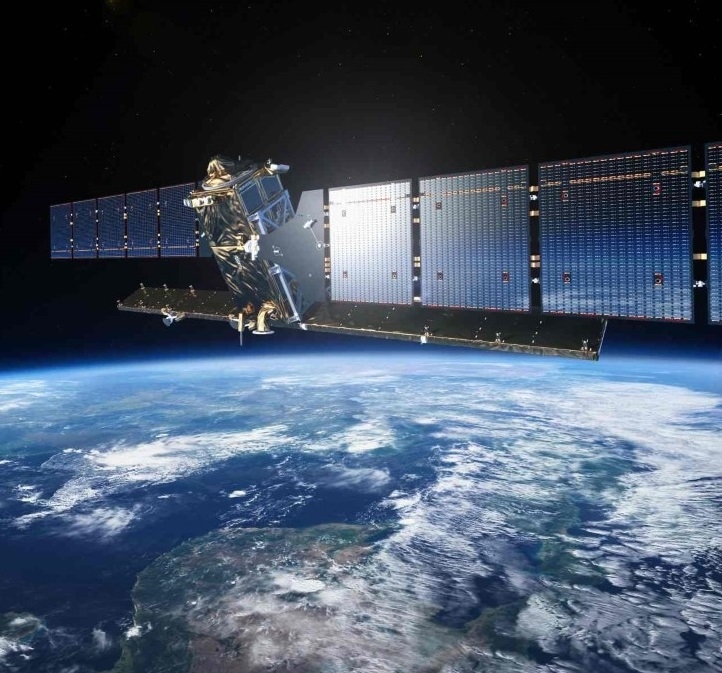Part of the Ground Segment team at ESRIN’s Earth Observation facility, in Frascati, Italy, Muriel Pinheiro is in charge of ensuring the quality of the data from Sentinel-1 and other upcoming ESA SAR missions.
The first in the Copernicus Sentinel series, Sentinel-1 is part of the family of EU-owned satellites that are developed and operated in the context of the largest environmental Earth observation programme in the world.
Designed as a two-satellite system, it is a high-resolution SAR (Synthetic Aperture Radar) imagery satellite, providing an all-weather, day-and-night supply of images of Earth’s surface.
Launched in 2014, Sentinel-1A is still active, while the Sentinel-1B satellite – which launched in 2016 –ended in 2022, after an unrecoverable hardware failure. Sentinel-1C is expected to launch this year, restoring the two-satellite configuration.
Part of the Ground Segment team at ESRIN’s Earth Observation facility, in Frascati, Italy, Muriel Pinheiro is in charge of ensuring the quality of the data from Sentinel-1 and other upcoming ESA SAR missions.
Born and raised in Brazil, Muriel has been always interested in science. She was introduced to the world of SAR imaging while at university, and became fascinated with how much information can be hidden behind a couple of Fourier Transforms.
After completing her Master’s degree in Electronic and Telecommunications Engineering with a focus on SAR processing, Muriel moved to Germany to pursue her PhD at the German Aerospace Center (DLR), continuing her path into the SAR world.
With the achievement of her PhD and after over a decade working hands-on with airborne and spaceborne data processing, she moved to ESA to work in SAR data quality, motivated by the big impact that the Copernicus open and free data policy has in the community.
ESA: What does your role as data quality manager entail?
Muriel: My job is to ensure that the products of our SAR missions are fit for purpose, effectively fulfilling mission requirements and evolving to accommodate as much as possible the ongoing needs of the community. This, of course, while always ensuring high quality standards at large scale. For this, a lot of work must happen from supporting the definition of the algorithms at early stages of the mission design, to overseeing their maintenance and evolution within the mission’s lifetime, coordinating with the ground segment services and mission manager and liaising with the end users.
ESA: What work do you and the Mission Performance Centre (MPC) carry out and what falls under your supervision?
Muriel: The SAR MPC is a service formed by Quality Control (QC) operators and SAR experts, which do the routine and expert QC of Sentinel-1 data. This entails automatic checks in product metadata and quick-look inspection, as well as expert analysis of key Level-1 and Level-2 performance indicators.
The analysis is periodically summarised and reported to the public in the form of quality reports and quality disclaimers. The SAR MPC is also in charge of updates of the processing baseline, including the change of processing parameters, and evolutions in product format and processing algorithms. We also take care of the maintenance of the L2 Processor software and are currently on-boarding ad-hoc quality control of data from the Copernicus Contributing Missions.
Besides the MPC, I also supervise activities which investigate possible evolutions of Sentinel-1 products and algorithms, as well as possible improvements of our general SAR calibration/validation approach.
ESA: How do users benefit from the continuous quality control of data?
Muriel: Quality control is important to guarantee the usability of our data. By doing a constant QC, we can solve consequent issues with the data processing, we can identify points for improvement, and most importantly, we can make sure that the users have data with traced quality. The provision of data with ensured quality and the identification of eventual limitations, for instance, via disclaimers, are crucial to support the conclusions derived from our products and down-stream applications.
ESA: What are the difficulties or challenges you face in monitoring the quality of data?
Muriel: One difficulty is certainly the monitoring of global quality with a sparse and not always certified reference measurement network, in particular in the case of our Level-2 products. In our session, we are continuously supporting the development of quality assurance procedures for SAR, including the consolidation of the Fiducial Reference Measurement (FRM) concept, targeting to always improve our SAR QC, but that is still certainly an on-going effort.
Another challenge is to raise awareness to the end users of all quality control, which is behind data production and making sure they can find all the relevant information in a centralised and user-friendly manner. SentiWiki is positively contributing to optimise this, but it remains a difficult task, especially considering the very diverse Sentinel-1 user community.
ESA: Any last thoughts on your overall experiences?
Muriel: Working at ESA and having a small part to play in the Sentinel-1 mission success is a great experience! I am particularly fond of discussing with the community and I fully encourage users to contact us for any comment or question regarding data quality and usability of Sentinel-1 products (for example via Copernicus EO Support eosupport@copernicus.esa.int or directly contacting me).
